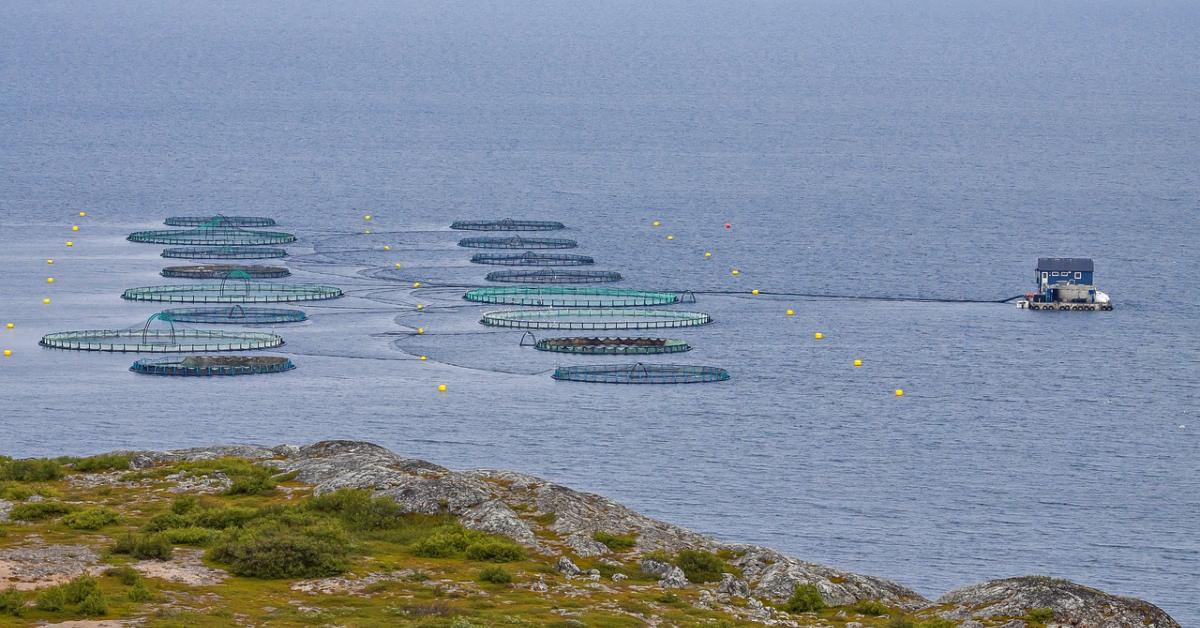In the past several decades, humans have become a top predator species, causing a major impact on the oceans and its resources. As the global population increases, so does the demand for seafood.
In order to meet this demand and to ensure the health of our planet, there is a need to find solutions to increase fish supply without damaging the environment.
One such solution is ocean farming, which refers to fish farms that are located along coastlines (as opposed to freshwater fish farms). The fish farming process involves capturing wild salmon and raising them in ocean cages until they are large enough to be released into rivers.
This method is greatly preferred by environmentalists who understand the difference between industrial fish farming, and raising fish in a more natural habitat.
Safer Ocean Farms – Salmon Ocean Farming
In the recent past, farmed salmon has been the choice for people who want to eat fresh, healthy salmon. However, inland salmon farms are often criticized for being unhealthy and environmentally unfriendly. In light of these criticisms, many companies have started ocean-farmed salmon as an alternative.
Ocean-farmed salmon is a healthy choice for consumers who want to reduce their carbon footprint and enjoy the nutritional benefits of fresh salmon. It’s also good news for fish lovers who are allergic to freshwater fish but don’t want to go without their favorite meal.
The worldwide demand for fresh salmon has increased so dramatically in recent years that aquaculture, or ocean farming, is now the fastest growing food production sector.
Ocean-farmed salmon is the safe and eco-friendly answer to the world’s demand for fresh salmon. The aquaculture industry has guidelines in place to ensure the health of its product, and the farming process itself can have a positive effect on local ecosystems.
Salmon Hatcheries
The process begins at the hatchery, where eggs are gathered and fertilized. From there, they are transferred to ocean farm sites. It generally takes around 12 to 18 months for the salmon to develop into juveniles before they are ready to be shipped out to ocean farms.
Salmon are anadromous fish, which means they hatch in freshwater streams and rivers, but live most of their adult lives at sea. Their hatching sites are typically located upstream from their spawning grounds.
The best way to attract salmon to a hatchery is through the freshwater tributary. The water temperature is most important for salmon reproduction, with temperatures between about 9 and 14 degrees Celsius being optimal for egg development and survival. Salmon also prefer low-velocity waters (less than 1 m/s), which helps them lay their eggs.
There are several types of salmon hatcheries. There are small scale hatcheries that raise fish for recreational fishing, large scale industrial hatcheries that raise fish for commercial fishing and marine parks that raise fish for the purpose of watching them in an enclosed man-made environment.
Fish Development
The process begins with collecting the eggs of wild salmon in rivers, where they have been naturally deposited. It is impossible to collect all of the eggs of a particular species, but enough are collected to begin replenishing that population. This can be done by artificially incubating them using an air-lift system or by using water currents to steer them towards the hatchery.
The salmon eggs are fertilized and then hatched. The fry, or juvenile salmon, are then sorted into tanks to grow. They are monitored closely to ensure that each fry has plenty of space and optimal conditions for growth.
Ocean Farms – The Safe Alternative
Young salmon are grown in freshwater for a period between half a year to over one year. The salmon are then released into net pens in the ocean (typically 100 yards across and 30 feet deep) where they grow until adulthood.
In general, there are two different types of net pens, those with continuous nets and those with vertical nets. The former is the most common, but both have their own benefits and drawbacks.
The two most important factors of salmon aquaculture are feed conversion ratios (FCR) and escape rate. FCR is defined as the amount of feed needed to produce one kilogram of live weight, while escape rate is defined as the proportion of fish that manage to escape from the net.
Salmon Farm Maintenance
Ocean farms have trained scuba divers who monitor the cages weekly to repair nets and check on the status of the fish. High-density polyethylene polar circles protect the salmon and nets from predators and storms, and also minimize escapes.
Harvesting Salmon
Salmon live in ocean farms for about 18 months before they reach their harvest size of about two and a half pounds. The harvesting process is designed to ensure the highest-quality, fresh salmon. The fish are harvested from the oceans and then quickly shipped to a processing plant.
These facilities have state-of-the-art technology. It uses a “zero discharge” system that sends all wastewater to the city sewer plant. Therefore, the salmon are harvested in a low-stress environment, and there are no chemicals used on the fish or in their water.
To the Table
Distribution centers receive fresh salmon and distribute it by truck to local fish mongers, supermarkets, and restaurants to ensure optimal freshness. This efficient process of delivering ocean-farmed salmon year-round from the hatchery to the plate has contributed to the rising demand for fresh salmon around the world.

